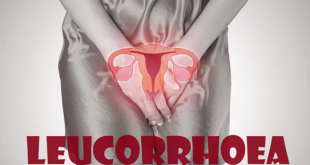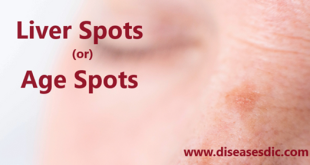Introduction – Leishmaniasis
Leishmaniasis is a parasitic disease caused by the Leishmania parasite. This parasite typically lives in infected sand flies. You can contract it from a bite of an infected sandfly. The sand flies that carry the parasite typically reside in tropical and subtropical environments. There are several different forms of leishmaniasis in people. The most common forms are cutaneous leishmaniasis, which causes skin sores, Mucocutaneous leishmaniasis, and visceral leishmaniasis, which affects several internal organs (usually spleen, liver, and bone marrow).
 Leishmania donovani in bone marrow cells
Leishmania donovani in bone marrow cells
Cutaneous leishmaniasis
Cutaneous leishmaniasis causes ulcers on your skin. It’s the most common form of leishmaniasis. Treatment may not always be necessary depending on the person, but it can speed healing and prevent complications.
Mucocutaneous leishmaniasis
A rare form of the disease, mucocutaneous leishmaniasis is caused by the cutaneous form of the parasite and can occur several months after skin ulcers heal. With this type of leishmaniasis, the parasites spread to your nose, throat, and mouth. This can lead to the partial or complete destruction of the mucous membranes in those areas. Although mucocutaneous leishmaniasis is usually considered a subset of cutaneous leishmaniasis, it’s more serious. It doesn’t heal on its own and always requires treatment.
Visceral leishmaniasis
Visceral leishmaniasis is sometimes known as systemic leishmaniasis or kala-azar. It usually occurs two to eight months after being bitten by a sandfly. It damages internal organs, such as spleen and liver. It also affects your bone marrow, as well as your immune system through damage to these organs. The condition is almost always fatal if it’s not treated.
Background
It is an ancient disease that may have been historically portrayed in figures, papyrus, statues and ceramics, and has been discussed from analysis of mummified human remains and archaeological findings (Altamirano-Enciso et al., 2003). The discovery of a chronic ulcer that heals over time has been cited under several names among the wider population of the Asian continent. However, the description of visceral leishmaniasis from historical papers is absent.
Reconstruction of the history of this disease has been facilitated by the collection of DNA and amplification of nucleic acids (PCR) from the mummies of Ancient Egypt in the region of Nubia. Several studies have also been performed using PCR to identify protozoan material from paleontological fossils.
Epidemiology of Leishmaniasis
The disease prevails throughout different geographical regions of the globe but occurs more specifically in the tropics and sub-tropics of Africa, South and Central America, the Middle East, Southern Europe, and Asia. According to the most recent reports by WHO and CDC, it affects people in nearly 88 developing and developed countries where about 350 million people are living in these regions. The disease is reported in approximately 12 million people worldwide with a recorded incidence of 1.5-2 million new cases each year of cutaneous form and 500,000 new cases of the visceral form of the disease
Causes of Leishmaniasis
- It is due to protozoan parasites from the Leishmania species. You get it from being bitten by an infected sandfly.
- The parasite lives and multiplies inside the female sandfly. This insect is most active in humid environments during the warmer months and at night, from dusk to dawn. Domestic animals, such as dogs, can serve as reservoirs for the parasite. Transmission may occur from animal to sand fly to human.
- Humans can also transmit the parasite between each other through a blood transfusion or shared needles. In some parts of the world, the transmission may also occur from human to sand fly to human.
Symptoms and signs
People can carry some species of Leishmania for long periods without becoming ill. Symptoms depend on the form of the disease.
Cutaneous leishmaniasis
The main symptom of this condition is painless skin ulcers. Cutaneous symptoms may appear a few weeks after being bitten by an infected sandfly. However, sometimes symptoms won’t appear for months or years.
Mucocutaneous leishmaniasis
In people with the mucocutaneous form of the disease, symptoms usually appear one to five years after the skin lesions. These are primarily ulcers in their mouth and nose or on their lips. Other symptoms may include:
- Runny or stuffy nose
- Nose bleeds
- Difficulty breathing
Visceral leishmaniasis
Symptoms often don’t appear for months after the bite with this type of leishmaniasis. Most cases are apparent two to six months after the infection occurred. Common signs and symptoms include:
- Weight loss
- Weakness
- Fever that lasts for weeks or months
- Enlarged spleen
- Enlarged liver
- Decreased production of blood cells
- Bleeding
- Other infections
- Swollen lymph nodes
Diagnosis
Laboratory diagnosis can include the following:
- Isolation, visualization, and culturing of the parasite from infected tissue
- Serologic detection of antibodies to recombinant K39 antigen
- Polymerase chain reaction (PCR) assay for sensitive, rapid diagnosis of Leishmania species
- Other tests that may be considered include the following:
- CBC count, coagulation studies, liver function tests, peripheral blood smear
- Measurements of lipase, amylase, gamma globulin, and albumin
- Leishmanin (Montenegro) skin testing (LST) (not FDA approved in the United States)
Treatment and medications
Treatment is tailored to the individual because it is caused by many species or subspecies of Leishmania. Pharmacologic therapies include the following:
- Pentavalent antimony (sodium stibogluconate or meglumine antimonate): Used in cutaneous leishmaniasis; not marketed in the United States, but available through the CDC under an Investigational New Drug (IND) protocol
- Liposomal amphotericin B (AmBisome): Effective against pentavalent antimony ̶ resistant mucocutaneous disease and visceral leishmaniasis
- Oral miltefosine (Impavido): Approved by the FDA in March 2014 for visceral leishmaniasis due to L donovani; cutaneous leishmaniasis due to L braziliensis, L guyanensis, and L panamensis; and mucosal leishmaniasis due to L braziliensis
- Intramuscular pentamidine: Effective against visceral leishmaniasis but associated with persistent diabetes mellitus and disease recurrence
- Orally administered ketoconazole, itraconazole, fluconazole, allopurinol, and dapsone: None is as effective as the pentavalent antimony compounds, but they may be useful in accelerating cure in patients with cutaneous leishmaniasis that does not progress to mucosal disease and tends to self-resolve
- Topical paromomycin: Shown to be effective against cutaneous leishmaniasis caused by L major and L mexicana
- Sitamaquine: Undergoing phase 3 trials
Local therapies for some forms of cutaneous leishmaniasis include the following:
- Cryotherapy
- Local heat therapy at 40-42°C
Other important issues in the management are as follows:
- Correction of malnutrition
- Treatment of concurrent systemic illness (eg, HIV disease or tuberculosis)
- Control of local infection
Prevention & Control
No vaccines or drugs to prevent infection are available. The best way for travelers to prevent infection is to protect themselves from sandfly bites. To decrease the risk of being bitten, follow these preventive measures:
- Avoid outdoor activities, especially from dusk to dawn, when sand flies generally are the most active.
When outdoors (or in unprotected quarters):
- Minimize the amount of exposed (uncovered) skin. To the extent that is tolerable in the climate, wear long-sleeved shirts, long pants, and socks; and tuck your shirt into your pants.
- Apply insect repellent to exposed skin and under the ends of sleeves and pant legs.
 Diseases Treatments Dictionary This is complete solution to read all diseases treatments Which covers Prevention, Causes, Symptoms, Medical Terms, Drugs, Prescription, Natural Remedies with cures and Treatments. Most of the common diseases were listed in names, split with categories.
Diseases Treatments Dictionary This is complete solution to read all diseases treatments Which covers Prevention, Causes, Symptoms, Medical Terms, Drugs, Prescription, Natural Remedies with cures and Treatments. Most of the common diseases were listed in names, split with categories.








keep on doing a good job. God bless u
I have been suffering with a parasite diagnosed in 1996 called strengyloides the rd pharmacy have a 60 safer box of medicine called bendeazal.I have now reoccurring episodes that because my insurance I have not been able to receive the medicine plus last year during the floods in norther California and the fires >I had been overcomes by massive amounts of the sand flea the only thing that saved me from being Eaton alive was my instincts told me to submerge myself in ice I was able to lift th